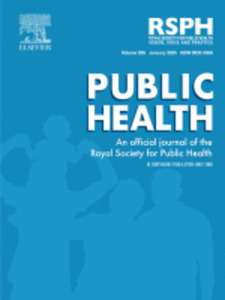Por favor, use este identificador para citar o enlazar este ítem:
https://repositorio.uca.edu.ar/handle/123456789/19944| Título: | An ecological study on the correlation between sanitary vulnerability and air pollution with COVID-19 pandemic burden: What lessons can we learn? | Autor: | Bullo, Manuela Lakkis, Susan Gabriela Enet, Alejandro Bonfiglio, Juan Ignacio Di Pasquale, Ricardo Héctor Represa, Sol Gonzalez, Luciana Marisol Gonzalez Aleman, Gabriela Lamas, María Cristina Salvia, Agustín Langsam, Martín Olego, Tomás Pérez Lloret, Santiago |
Palabras clave: | CONTAMINACION DEL AIRE; COVID-19; VULNERABILIDAD SANITARIA | Fecha de publicación: | 2025 | Editorial: | Elsevier | Resumen: | Objectives: Air quality, socioeconomic status, access to healthcare, genetic predispositions, among other factors impacted the COVID-19 pandemic burden. We explored the relationship between PM2.5 levels and sanitary vulnerability in COVID-19 pandemic health outcomes in Argentina. Study design: Ecological study. Methods: We used the Sanitary Vulnerability Index (SVI) to account for social determinants of health and distance to health centers. PM2.5 air concentration and human emissions were obtained from the Atmospheric Composition Analysis Group V5.GL.03 dataset and the inventory of anthropogenic gas-phase and particle emissions for Argentina (GEEA-AEIv3.0M), respectively. Finally, we extracted data from March 1, 2020, to January 1, 2021 from the official Argentinean database of COVID-19 (Argentine Ministry of Health). Results: SVI correlated with the rate of positive COVID-19 tests per 100,000 people (r = −0.56, p < 0.01), Intensive Care Unit (ICU) admissions per 100,000 people (r = −0.52, p < 0.01), and deaths per 100,000 people (r = −0.58, p < 0.01). PM2.5 air concentration correlated with the rate of positive tests (r = −0.09, p = 0.03), ICU admissions (r = −0.16, p < 0.01), and mortality (r = −0.11, p = 0.01). PM2.5 human emissions did not show significant correlations with COVID-19 outcomes. There was a significant interaction between SVI and PM2.5 air concentration for the rate of positive COVID-19 tests and mortality. PM2.5 air quality showed a positive and significant association with the outcomes only in areas with high SVI. A machine-learning model including these variables accounted for 46 % of the variability. Conclusions: The interplay between health vulnerability and air quality in human health is complex. Addressing the burden of COVID-19 pandemic requires the consideration of a comprehensive range of determinants. | URI: | https://repositorio.uca.edu.ar/handle/123456789/19944 | ISSN: | 1476-5616 0033-3506 |
DOI: | 10.1016/j.puhe.2024.12.002 | Derechos: | Attribution-NonCommercial-NoDerivatives 4.0 Internacional | Fuente: | Public Health. 2025, 238 |
| Aparece en las colecciones: | Colaboraciones en ediciones externas |
Ficheros en este ítem:
| Fichero | Descripción | Tamaño | Formato | |
|---|---|---|---|---|
| thumb.gif | 7,02 kB | GIF |  Visualizar/Abrir | |
| ecological-study.pdf | 6,2 MB | Adobe PDF | SOLICITAR ACCESO |
Este ítem está sujeto a una Licencia Creative Commons

